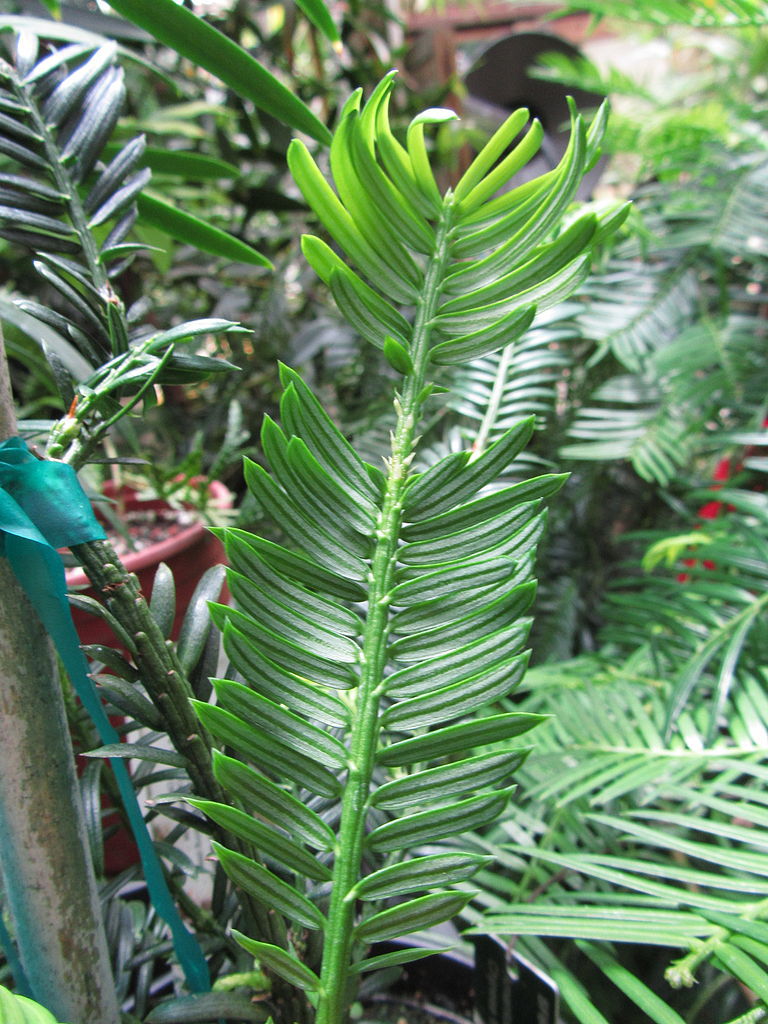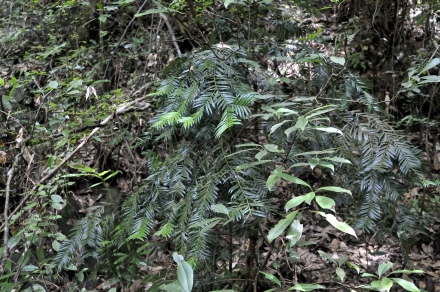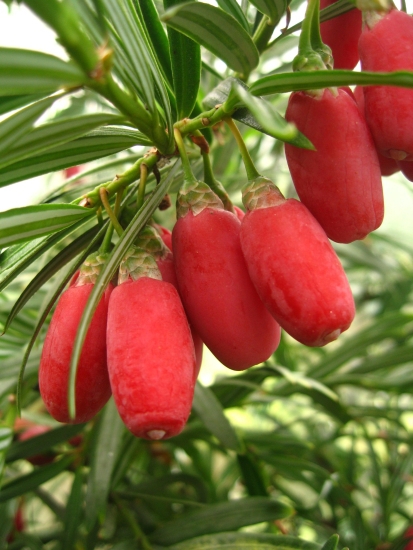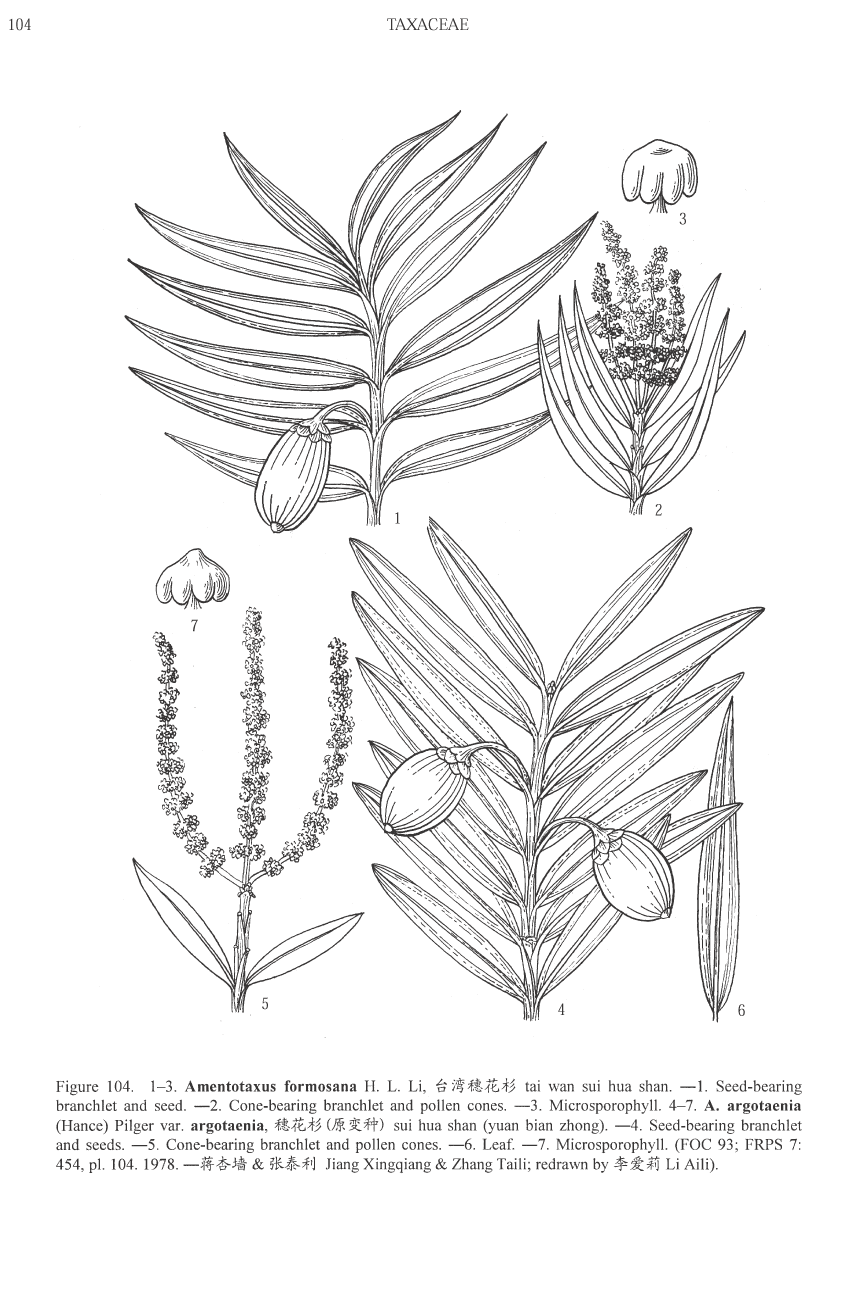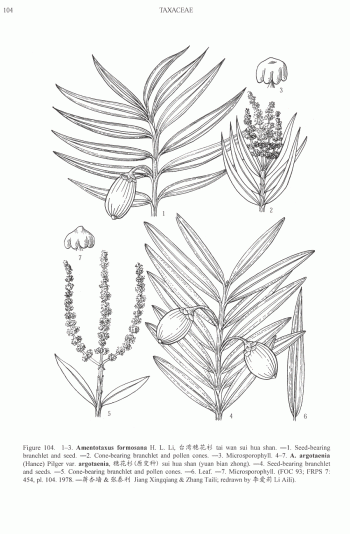
Amentotaxus argotaenia, as described in 1916 by Robert Knud Friedrich Pilger (1876-1953), in Botanische Jahrbüscher füsr Systematik, Pflanzengeschichte und Pflanzengeographie, 54th edition is commonly known as Chinese flowering, or Northern catkin-yew; as well as ç©—èŠ±æ‰ (sui hua shan) in the Chinese language; and sam hoa bong in Vietnamese. This species name translates from Latin into "silver tape," probably referring to the bold bands of stomata on the undersides of the needles.
Description. Northern catkin-yew is a shrubby, evergreen, coniferous species of tree in the Taxaceae family. Mature plants will measure to 7 to 24 feet (2 - 7 m) tall, with a trunk up to 8 inches (20 cm) in diameter, measured at breast height.
Hardy to USDA Zone 9, cold hardiness limit between 20° and 30°F (-6.6° and -1.1°C).
The status of the species is not good as the growth rate of the plant is slow and its regeneration is infrequent. Its seeds are poorly dispersed and predated by rats. The declining of the population is also caused by forest clearing and habitat modification.
In Hong Kong, this species is under protection based on Forestry Regulations Cap. 96A. All the localities of the species occurrence are within Country Parks under protection. Tai Mo Shan Montane Scrub Forest in the upper Shing Mun Valley was assigned as a Sites of Special Scientific Interest (SSSI) in 1975 as the forest supports this rare species and other species, Camellia granthamiana, Camellia waldenae, and many species of orchids.
